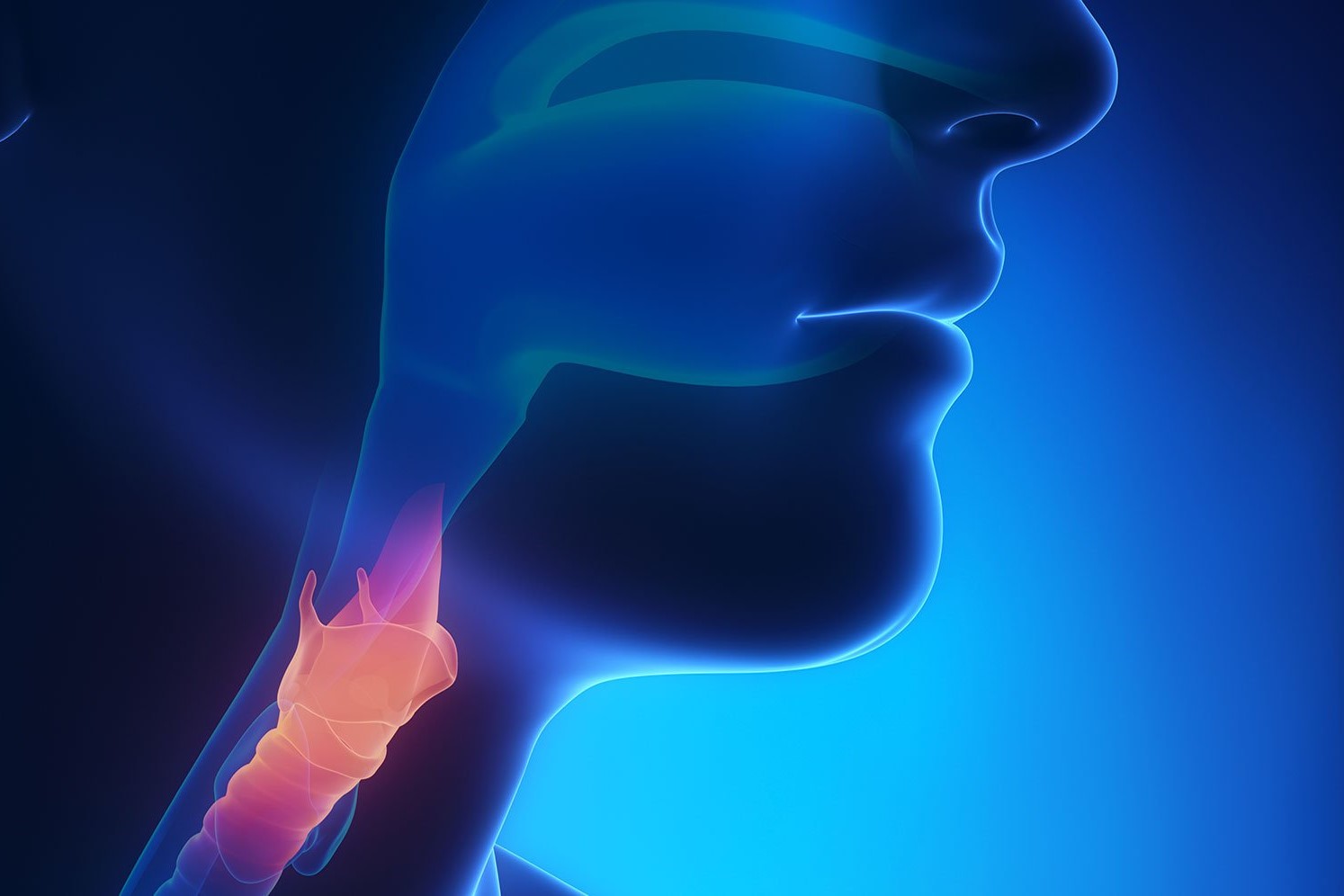
Cancer of the larynx: symptoms, causes and diagnosis
Cancer of the larynx is a tumour that originates in the tissues of the larynx, the organ of the respiratory tract – consisting of a cartilaginous canal about 12 centimetres long – that houses the vocal cords and connects the nasal and oral cavities with the trachea
Cancer of the larynx originate, in most cases, from the mucous membrane (epithelium) lining the inside of the canal
Much more rarely, they originate in the other tissues of the organ (glands, adenomas, muscle tissue).
The average age at diagnosis of oral cancer is 64 years and in 95 per cent of cases it arises after the age of 40.
Causes of laryngeal cancer
Risk factors for laryngeal cancer (and all oral cavity cancers in general) are cigarette smoking, alcohol and the presence of chronic throat inflammation.
Symptoms and diagnosis of laryngeal cancer
The symptoms of laryngeal cancer are not very specific and depend mainly on the size and location of the tumour.
A tumour can be suspected when there is a sudden lowering of the voice or a change in its timbre (e.g. if the voice becomes hoarse for no specific reason), when there is localised pain in the ear and swelling on the neck, when there is difficulty swallowing and when there is a chronic (more than two weeks) sore throat.
The diagnosis is made on the basis of a series of examinations that must be carried out in the presence of suspicious symptoms: palpation of the throat and neck to check the state of the lymph nodes; internal examination of the throat to ascertain whether there are any masses or swellings; CT scan; MRI.
For the diagnosis of laryngeal tumours, the most useful examination is laryngoscopy, a painless procedure that allows the internal structures of the larynx to be visualised using a fibre-optic laryngoscope.
Any suspected lesion must be biopsied, whereby a small portion of tissue is taken and analysed under a microscope for the presence of cancer cells.
Evolution
The evolution of laryngeal cancer depends on whether or not the tumour mass has spread to the surrounding tissues.
From this point of view, laryngeal cancer is classified into five stages.
Stage 0 (carcinoma in situ)
In this stage, the tumour is only present in the inner mucosa of the larynx.
Stage I
In this stage the tumour is confined to the primary site only: supraglottis, subglottis or glottis.
Stage II
At this stage the tumour has spread to the tissues surrounding the primary site, but is still confined to the larynx.
Stage III
The cancer is present in the larynx, the vocal cords do not vibrate normally and/or the tumour has invaded an ipsilateral lymph node, i.e. located in the same part of the neck as the tumour, with a diameter of less than 3 centimetres.
Stage IV
The tumour has spread beyond the larynx and invaded other organs or lymph nodes in the neck.
Stage IV is conventionally subdivided into stages IVA, IVB and IVC, depending on the organs affected by the metastases.
Laryngeal cancer that recurs after treatment is defined as recurrent.
Recurrence may develop 2 to 3 years later.
Cancer of the larynx can be cured by surgical removal
In more severe situations, removal of the entire larynx (total laryngectomy) or parts of it, as well as the surrounding lymph nodes, is often necessary.
Radiotherapy and chemotherapy may be used as adjuvants in the post-operative period in order to destroy any residual neoplastic cells.
Total laryngectomy, due to the removal of the vocal cords, can lead to complete loss of the ability to speak.
Even in the absence of the larynx and vocal cords, however, some patients can return to using their voice through training (speech therapy) and the use of special devices.
Read Also:
Emergency Live Even More…Live: Download The New Free App Of Your Newspaper For IOS And Android
What Are Gynaecological Tumours?
Laryngeal Tumours: Symptoms, Diagnosis And Treatment
Hepatic Distomatosis: Transmission And Manifestation Of This Parasitosis
Liver Cirrhosis: Causes And Symptoms
Benign Tumours Of The Liver: We Discover Angioma, Focal Nodular Hyperplasia, Adenoma And Cysts
Acute Liver Failure In Childhood: Liver Malfunction In Children
The Different Types Of Hepatitis: Prevention And Treatment
Acute Hepatitis And Kidney Injury Due To Energy Drink Consuption: Case Report
New York, Mount Sinai Researchers Publish Study On Liver Disease In World Trade Center Rescuers
Acute Hepatitis Cases In Children: Learning About Viral Hepatitis
Hepatic Steatosis: Causes And Treatment Of Fatty Liver
Hepatopathy: Non-Invasive Tests To Assess Liver Disease
Liver: What Is Non-Alcoholic Steatohepatitis
Hepatocarcinoma: Symptoms, Diagnosis And Treatment Of Liver Cancer


